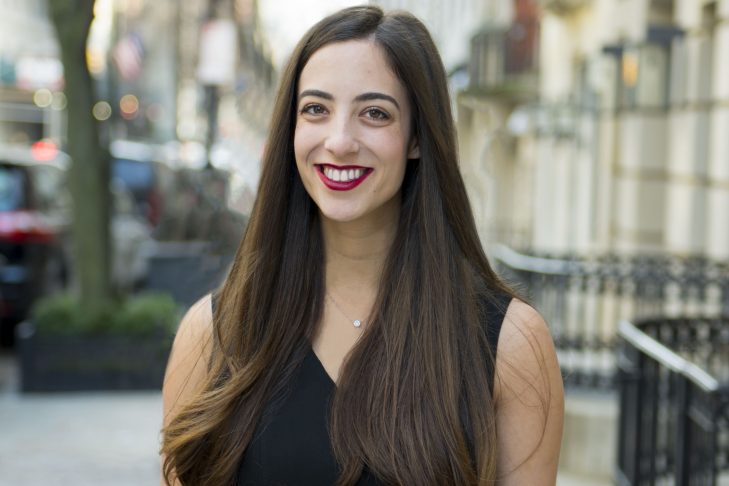This week, I got in touch with Hannah Orenstein, author of the just-published romantic sensation “Love at First Like.” In the book, Brooklyn jewelry shop owner Eliza Roth tries on an extravagant engagement ring from her shop after learning of an ex’s engagement and accidentally posts a picture to her enormously popular Instagram account. When the post causes sales to skyrocket, Eliza has to keep up the charade and find a fake fiancé to match her ring.
Orenstein is also the author of “Playing with Matches,” as well as the senior dating editor at Elite Daily. Her history as a matchmaker shines through this romantic summer read, which I was lucky enough to ask her all about.
First of all, what are you reading right now?
I just cracked open “American Royals” by Katharine McGee, the first in a series of books that imagine the lives of the American royal family, had the Revolutionary War not led to a democracy. Her last series was so incredibly juicy and creative, so I can’t wait to dive fully into this one.
As a Jewish writer, how do you feel representation of Jewish women has progressed in genre fiction?
There were characters I loved growing up that felt Jewish to me, but that was never made clear in the text. So, portraying a Jewish character with a Jewish name who is open about her religious identity is important to me. There was never a question in my mind that Eliza would be Jewish.
“Love at First Like” goes deep into Instagram culture and the stress of curating a “perfect” life. How do you think social media has affected our current dating culture? How did it manifest in the book?
Thanks to social media’s incredibly public nature, there’s this rising pressure to “perform” your love life online by posting photos with your significant other, especially around the time you get engaged and get married. And these photos often receive more likes than any other photos you post, including exciting career news or personal achievements. On the flip side, viewing what can feel like endless strings of these types of photos can be a powerful force, too. It’s easy to feel as if you’re missing out or behind your peers if you don’t have a relationship to post about online. Those two issues drive the main drama in the first chapter—Eliza sees her ex’s engagement announcement on Instagram, she gets a little carried away with drinking whiskey to cope with her feelings about it and accidentally posts a photo of herself wearing a diamond engagement ring. Her followers assume she’s engaged, and that proves to be very good for business, so she sets off on a journey to find a fake fiancé she can show off on Instagram.

New York City is very much a character in the book. How do you feel the setting drives the story?
New York is a city full of ambitious over-achievers, and some of them, like Eliza, might do anything to make their dreams come true. Eliza moved to the city to make her dream life possible, and when you have so much at stake, you might make some questionable decisions to keep your dreams afloat.
What inspired you to make Eliza explicitly Jewish?
I wrote Eliza’s Jewish identity to mirror mine. She identifies as Jewish, but she isn’t necessarily religious; her faith doesn’t play a major role in her life. In my previous book, “Playing with Matches,” my protagonist, Sasha, had a similar expression of her Jewish heritage, but that book was a little bit more explicit about the nuances of dating as a Jew. “Love at First Like” doesn’t share that focus on religion, because for many young Jews, religion isn’t a factor when dating.
What makes a beautiful and effective rom-com? Did you draw experience from other rom-coms while writing?
First and foremost, a rom-com should be entertaining, and you should be able to fall in love with the characters. “Love at First Like” wasn’t inspired by a specific rom-com, but the trope of a fake relationship has played out in so many incredible rom-coms, including Jenny Han’s “To All the Boys I’ve Loved Before.”
How does writing fiction differ from writing for magazines? Do you find you have different writing rituals for each?
They differ enormously. One of the biggest differences is the feedback loop. Most of the time, when writing for Elite Daily or other publications I’ve freelanced for—Cosmo, Marie Claire, The Washington Post—the story is online in a matter of hours or days, and you can get feedback from readers immediately. With fiction, it takes a year or even several years for a book to make it to shelves, so you really have to trust your gut and savor the longer response time. It’s nice to work on a bigger project with a longer timeline.



